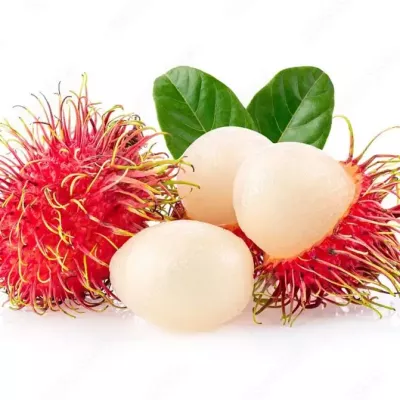



Rambutan N18, originally a Malaysian variety, was named N18 because, on average, 18 fruits make up 1 kg. Its fruits are big and round in shape, with a bright red colour. This is the most commonly cultivated variety of Rambutan.

Pay using UPI, Card or Netbanking

Shipping within 3 working days
Rambutan is a high-quality fruit that is also quite attractive with its hair-like spikes on the outer skin. The word rambutan literally means ‘hairy’ in Malay. Many different varieties of Rambutan exist, among which N18 is the most popular cultivar.
Depending on the variety, they vary in colour, size, sweetness, firmness of the pulp, whether the flesh is easily separated from the seed, shelf life, etc.
N18 is the most popular cultivated Rambutan variety in India for the following reasons:
Rambutan can grow 15 metres or more if left unchecked. However, good practises require the tree to be pruned to an umbrella shape not taller than 20 feet in height. The side branches are encouraged to get as wide a canopy as possible, as the fruiting happens at the tips of the peripheral branches.
Rambutan needs regular watering, especially during the fruit-setting period.
The recommended planting distance is 35 to 40 feet. However, when space is a constraint, pruning may be done.
If space is limited, it can be grown in containers of 100 litres or more. The larger the container, the better. Choose an air pot instead of a drum for best results. It should be noted, however, that rambutan grows into a large tree and therefore only suboptimal results can be expected if it's grown in a container.
Rambutan is generally not much affected by pests. However, during the initial years, leaf-eating worms could cause problems. This is easily solved by spraying Ekalux or other suitable organic or synthetic insecticides.
The problem usually subsides by the time the plant reaches maturity and is not often found on larger trees.
Pruning should be done after every harvest. Pruning should be done in such a way that the canopy gets wider. Ensure air circulation at the centre of the plant by removing inward-growing branches that trap little sunlight.
Pruning is also done to contain the tree in a limited area, where space is a constraint.
The fruit is sweet and juicy, with white, translucent flesh surrounding a single seed. The fruit may weigh from 25 to 80 grams, depending on the variety.
Data sheet